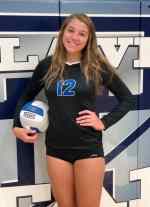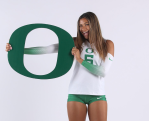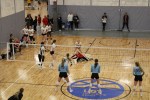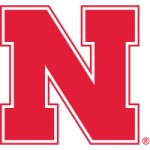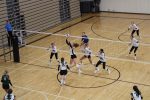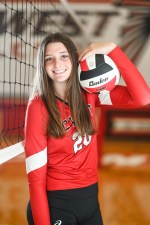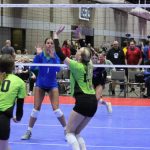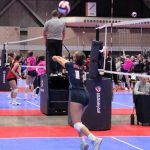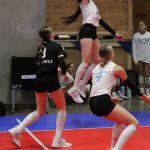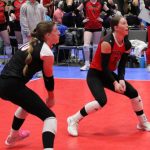How in the World Do You Figure Out the Player Rankings?

With all of our class rankings now updated, this seems like a good time to answer a pretty popular question at the moment – how do you compile your player rankings?
True – there are a lot of other popular questions at the moment like, “Are you stupid?” “What in the world are you thinking?” “You don’t honestly think that…..” – but the “how do you compile your rankings” is probably the easiest to answer, so I’ll go with that
The first thing to know before I get into it is that the player rankings are the most gut-wrenching things I do. And I don’t like gut-wrenchers. Even if I think the rankings will make one player happy, it will probably make another five upset. I know that and I hate it.
Also, understand that the rankings are based on a player’s potential in college. Hence the reason why you are going to see more raw players and tall players at the top than you might think. More on that later, though.
The Process
For each graduating class, I’ve always had a spreadsheet for players. As an example, about four-and-a-half year ago I started the 2018 spreadsheet. This is where I put all the info about a player (school, height, position, etc.) with notes on each player that I’ve seen or been told about. Within that spreadsheet I create tabs for the different levels a player is on. As an example, right now on the 2018 spreadsheet, Jaela Zimmerman is the only player listed on the Tier 1 tab. She’s simply on her own level. Each spreadsheet for each class as 10 tiers.
The point of the tiers is to separate the players into groups of similar potential when it comes to college. The spreadsheets for each class are constantly changing with new notes, new information and with new placement of athletes into higher or lower tiers based on their progress.
Another example from the 2018 spreadsheet would be Ewing’s Bailey Schindler. She is currently #27. Prior to this update, she was nowhere on my spreadsheet. Completely absent. Why? Because I had never seen her, read about her or been told about her by anyone. She was literally unknown to me until Ewing showed up at the state tournament this fall and she impressed anyone who saw her. After watching her and talking with a couple other people, she went into a very high tier immediately. That’s kind of the way it works. Once I’ve seen you, read about you or heard about you, you go into the spreadsheet for your graduating class.
To continue using 2018 as an example, there are 175 ranked players. The spreadsheet I use has close to 300 names. Of those 175 ranked players, I’ve seen roughly 130 personally. The highest-ranked player in the 2018 class that I have not personally seen play a match (high school or college) is Wisner-Pilger setter Lauren Jacobsen at #33. But, when legendary Wisner-Pilger coach Jean Groth says she’s the best setter the school has ever had, that’s worth something. Especially when it’s backed-up by multiple college coaches. After that, the next highest I haven’t seen with my own eyes is Elwood’s Felicia Knoerzer at #60. With Knoerzer, the feedback I’ve gotten from college coaches makes me very comfortable with that ranking.
So, every time I’m at a high school match or a club match or a practice or a team camp, the spreadsheets are getting updated with new info and new names. It’s a fluid process. And since the rankings are now going to be updated quarterly, the more movement you’re likely to see in the player rankings.
The Evaluation
Let me make these points right away. No, I don’t care what club you player for. No, I don’t care if you’re on a 1s, 2s or 3s team at a club. No, I don’t care what high school you play for. No, I don’t care what college you are committed to. When it comes to evaluating a player’s ability to play in college, none of that matters.
And guess what? College coaches will tell you the same thing. How do I know that? Because that’s what they’ve told me.
Pure and simply, I make it a point to try and talk to college coaches every chance I get. And, remember, I’ve been doing this sort of think for close to 25 years now, so just being able to tell what athletes “have it” and what ones don’t has become almost second nature to me. But, most importantly, I’m always – always – trying to educate myself on what college volleyball coaches are looking for. I’ve been very blessed that coaches are willing to be open with me and share their knowledge with me to help me understand what they are looking for.
In turn, that’s what I look for. And, frankly, most college coaches are looking for the same basic things. Sure, each coach and program has different things they like and prioritize, but for the most part they’re all looking for the same qualities. You could say it like this – all college coaches are looking for potatoes. Now, some prefer tator tots, some like French fries, some like hashbrowns, some like baked some like mashed, etc., but at the end of the day, they all want potatoes.
How high do you play above the net? If you’re going to be anywhere near the net, college coaches want to know how high above you will play. At a recent match I watched, a 5’10 player got a stuff block on a 6’3 player at the net. It isn’t so much about how tall you are as it is how high above the net you play. Some 5’10 players play like their 6’3, so 6’3 players play like they’re 5’10. All college coaches want players that play high above the net and play taller than they really are.
A great landmark for this is what part of your body is even with the top of the tape when you play. Even to play at the NAIA level, you better be getting your elbows well above the net. If you want to play Division I, you better be able to get your chin to the top of the tape or – at the very least – the top of your arm pits.
Can you play defense? Here is the best advice that I can give to any player 5’9 or shorter that wants to play volleyball in college. Make yourself a defensive machine. Here is the best advice I that I can give to players 5’10 and taller that want to play in college. Make yourself a defensive machine. If you’re a defensive liability on the court, you’re going to have a very difficult time finding the court in college. And it plays a large roll in the player rankings.
Consider what Creighton coach Kirsten Bernthal Booth said about 2018 #1 recruit Jaela Zimmerman. “Jaela’s outstanding because she is a package player. You’re going to notice her in the front row, but she’s just as good in the back row – both in serve receive and defense.”
I don’t care how hard you hit or how many kills you might get, if you can’t hold your own defensively, that’s going to be a problem. When I think about the most powerful attackers in the state right now, I think about Zimmerman, Marian’s Emily Bressman and Skutt’s Lindsay Krause. All three of them are also incredible in the back row. You want to get the attention of a college coach, play defense, play defense, play defense.
Make yourself a complete volleyball player. If a college coach likes two attackers equally, 99% of the time they are going to go with the better defender. Always take advantage of every opportunity that exists to work on your defense. No matter how tall you are or how certain you think you are that you’re a middle, go to every libero training session you can find.
What’s your work ethic/body language and how are your parents? Every college coach I know has quit recruiting a kid because of poor work ethic. Ditto for body language and double ditto for what parents are like. Every. Coach. So, those are things I take into account as well. A coach that I have a ton of respect for told me once about Player X, “She’s the laziest player I’ve ever coached.” That player never was/isn’t ranked nearly as high as her talent indicates she should be. Don’t be a player that makes coaches say that about you.
Do you go through warm-ups like it’s annoying? Do you give your setter and hitters dirty looks. Are you looking around during timeouts instead of engaging in the huddle? If so, college coaches don’t want to deal with you. Coaches want players that make their lives easier – not harder. Coaches recruit kids they like – if you put off an unlikeable vibe, you’re going to get crossed off recruiting lists without any hesitation.
Here is a true story from last summer’s team camps. I was talking with one college coach and asked him about Player X from a Class A program. The college coach said, “I like her. I was looking hard at her and then I was sitting behind her dad in the stands. All he did was bad mouth players on her team and other teams. I had to cross her off my list. Her family just isn’t a cultural fit for our program.”
It’s impossible to overstate the power of a positive attitude and the adverse effects of a negative one.
Liberos get little love. Life just isn’t fair, just ask any libero out there. The facts of life are simply that to play at the net at pretty much any level in college, you’re probably going to have to be 5’10 or taller. And the facts are that there are simply many, many more kids that are shorter than 5’10 than there are kids 5’10 or taller. Thus, the rule of supply and demand kicks in. The taller players are coveted more because there are fewer of them. The glut of players shorter than 5’10 that can play great defense creates a surplus – meaning fewer scholarships for back-row specialists.
Therefore, high-ranking liberos are rare birds. Liberos are usually the last players to get offered money. Again, it’s simply a matter of supply and demand. And then consider the number of standout high school outside hitters who transition into liberos in college. Names like Taliyah Flores, Raegan LeGrand, Amanda Young, Sydney Townsend and Hayley Densberger come to mind. Heck, Even Kayla Banwarth was a high school attacker before becoming a libero at Nebraska.
Nobody appreciates great defensive and incredible play in the back row like I do. It’s the foundation for where great volleyball starts. But the player rankings reflect that upward battle that liberos face. In fact, only two liberos are ranked in the top 10 in their respective classes – Flores at #3 for 2018 and Jaiden Centeno at #8 for 2019. And, by basically everyone’s account, those two are hands down the best liberos in the state.
So liberos, it’s nothing personal. It’s just life. And life isn’t fair, sorry.
So, when it comes to the PrepDig player rankings in Nebraska, that’s how the process works and what the evaluation is largely based on. There is so much more that goes into the evaluation (arm speed, shot making, consistency, etc.) but that’s the gist of it.
Are the rankings perfect? Absolutely not. Will they ever be? No. Is there really much a difference between a player ranked #83 and one ranked #135? No, probably not. Do college coaches study the lists and make offers based on it? Lol.
What the rankings are, though, is a celebration of the incredible talent we have in the high school volleyball ranks in this state. It’s a chance to put down the names of players I’ve enjoyed watching, that fans have enjoyed watching, that have done great things in their high school careers that deserve to be mentioned.
In total, we ranked a total of 574 players. Each and every one of them deserves that recognition and I’m looking forward to putting even more names on those lists in the coming years.
